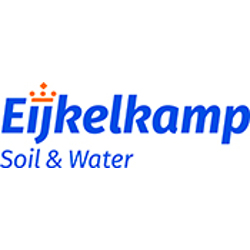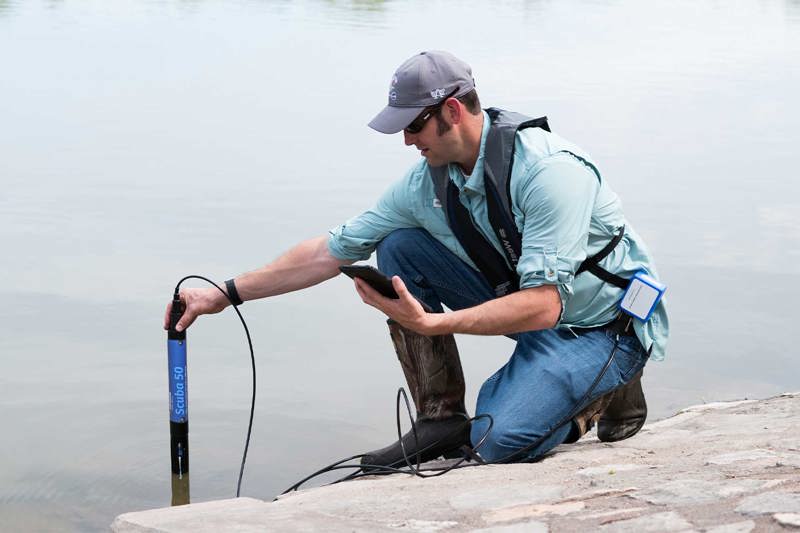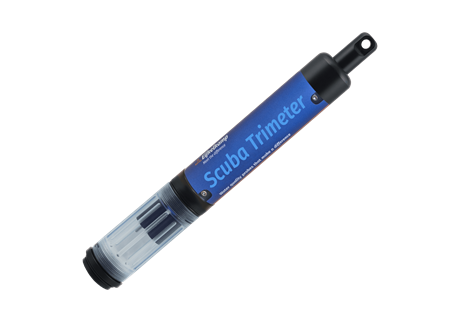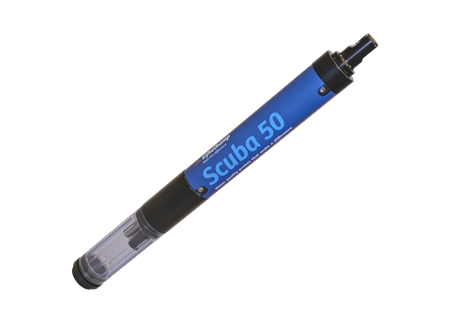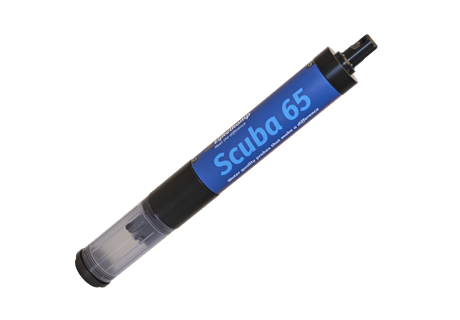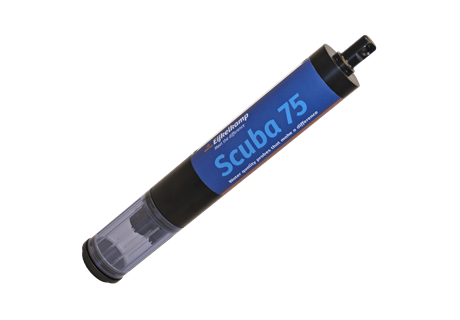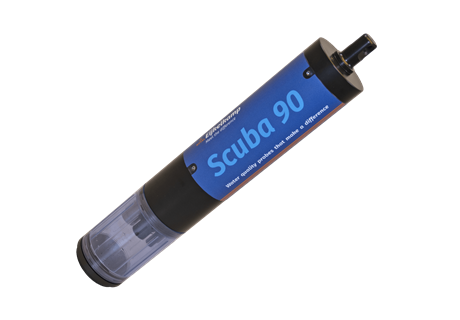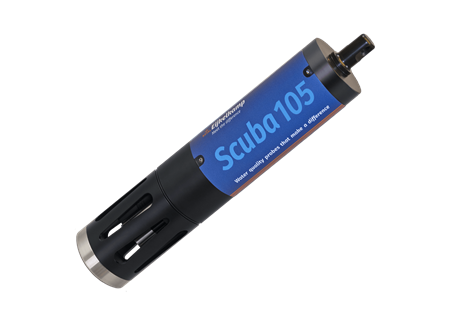Scuba water quality sensors
The Scuba water quality probes are suitable for various applications. They can be used for discrete sampling and profiling, or as self-powered loggers. Connect them to telemetry stations for continuous real-time monitoring and have your water quality data accessible directly via cloud-based software. The Scuba probes can communicate via RS-232, SDI-12 or Modbus.
The Scuba probes are highly customizable to meet your needs. Choose your parameters to measure to select the right the sensor for your applications. You can even add a battery pack to turn your field sensor into a monitoring device for several weeks or months. The Scuba range is equipped with features that ensure carefree use under various circumstances. Optional copper gauze slowly dissolves in water, bathing the sensors with copper ions that prevent biofouling. Additionally, the larger probe models (Scuba 75, 90 and 105) feature a wiper system to keep your sensors clean. Those are designed for extended use in the field.
The Scuba probes are low in maintenance costs, partly because the reference sensor is separate which reduces the need for consumables. The optional copper gauze, and wiper in the larger Scuba probes, also help reduce the frequency for necessary maintenance. Depending on the fouling capacity of the water it is placed in, a Scuba can function with maintenance intervals of at least a month or even longer.
Why choose the Scuba water quality probes:
- An industry-leading 3 year warranty
- Long sensor lifetime
- Customisable, to measure the parameters you need
- Low maintenance costs
- Large internal datalogger memory storage for several weeks/months
- Automatic recording of internal calibration data and sensor health indication
- Calibration is easy and fast
Every Scuba probe features:
- Anti-corrosive housing
- TLED status indicators on each sensor that provide important diagnostic information
- Robust marine bulkhead connectors
- Direct, Bluetooth or telemetry connection
- User-friendly and intuitive software for iOS, Android, and Windows
Scuba probes available:
| Scuba Trimeter - this small but functional instrument, with a diameter of 50 mm, can hold any one sensor in addition to the default temperature and depth sensors. You can choose to measure parameters such as turbidity, dissolved oxygen (DO) or electric conductivity (EC). Exceptions include the Photosynthetic Active Radiation (PAR), CO2 and Transmissometer sensors.. |
| Scuba 50 - 50 mm in diameter and is by default equipped with temperature, pH, electrical conductivity and dissolved oxygen sensors. Additional sensors are optional. |
| Scuba 65 - measures the 4 important water parameters pH, electrical conductivity, dissolved oxygen, and temperature, as well as turbidity - all in a compact probe of 65 mm in diameter. |
| Scuba 75 - with a diameter of 75 mm, packs the big 4 in water quality with optional ORP, depth, and wipered turbidity. It is available in two configurations, the 75A and 75B. The Scuba 75A also has a wipered turbidity sensor, while the 75B can accomodate one ISE (ion specific electrode) sensor. |
Scuba 90 - SThe Scuba 90 is available in two configurations, the 90A and 90B. Both models come with a standard range of sensors including temperature, pH, electrical conductivity (EC), turbidity, and dissolved oxygen (DO). ORP and depth sensors are optional. It also offers more customisation options to add extra sensors to the probe.
|
| Scuba 105 - 105 mm in diameter and can hold up to 13 sensors – that’s more than any other multiparameter probe in the industry. It has a built-in central cleaning system for carefree longterm monitoring. The Scuba 105 comes standard with turbidity, temperature, pH, conductivity, and dissolved oxygen sensors, with the option to add ORP and depth sensors. In addition to these standard sensors, the probe can accommodate 3 fluorometers, plus 3 ISE sensors. The large amount of possible sensors make this instrument very suitable for extensive (scientific) research. |
For further information look at the brochure, manual or Eijkelkamp homepage.
Why measure in the field rather than the lab
Storing and transporting water samples in bottles can change the pH (acidity), EC (electric conductivity) and O2 (dissolved oxygen) of the sample, leading to inaccurate measurements. Pumping samples up to the surface and storing in the bottle can raise oxygen levels, while settlement of hydroxides influences EC. Analysis in the field is therefore, in most cases, preferable.

